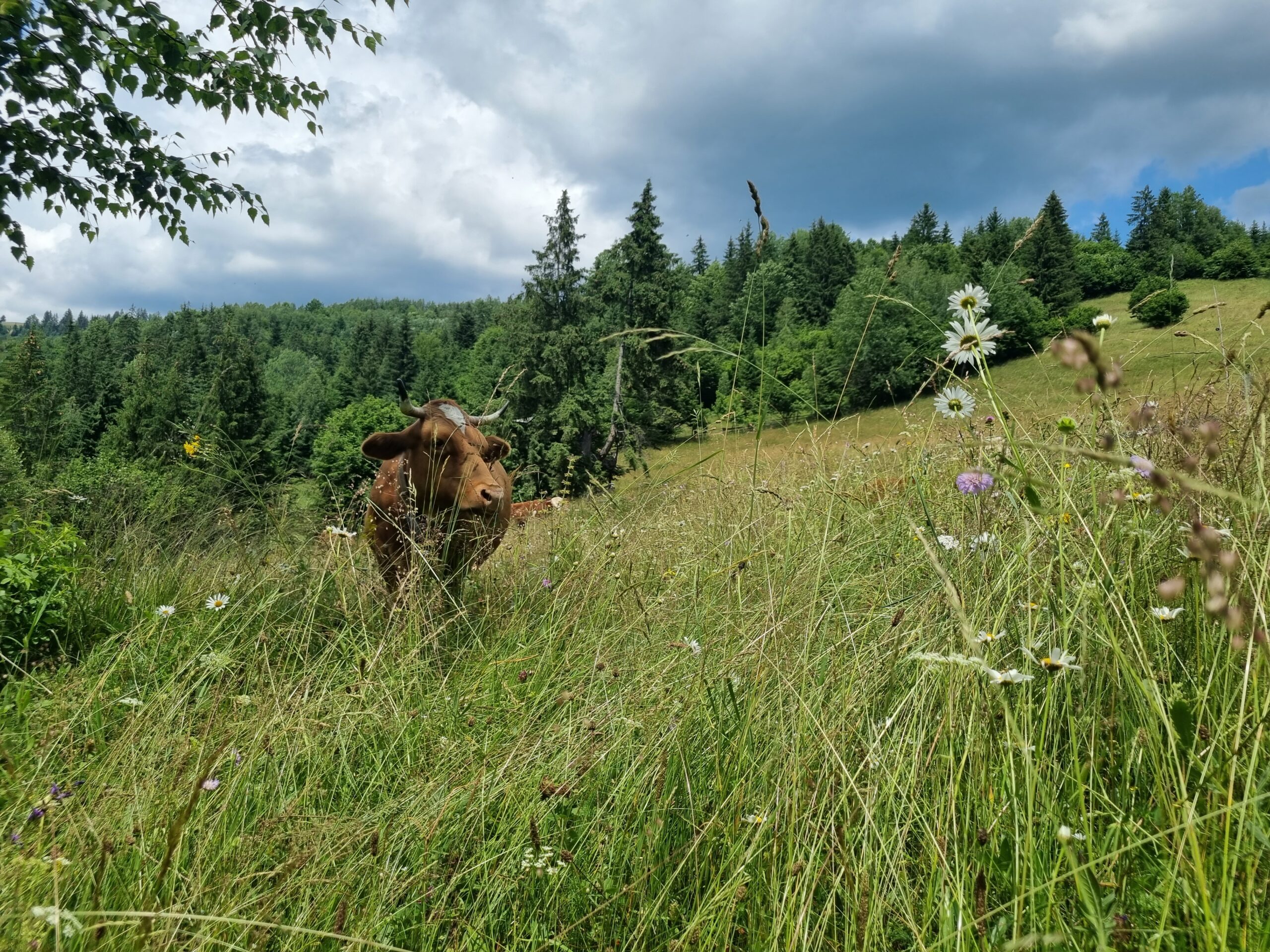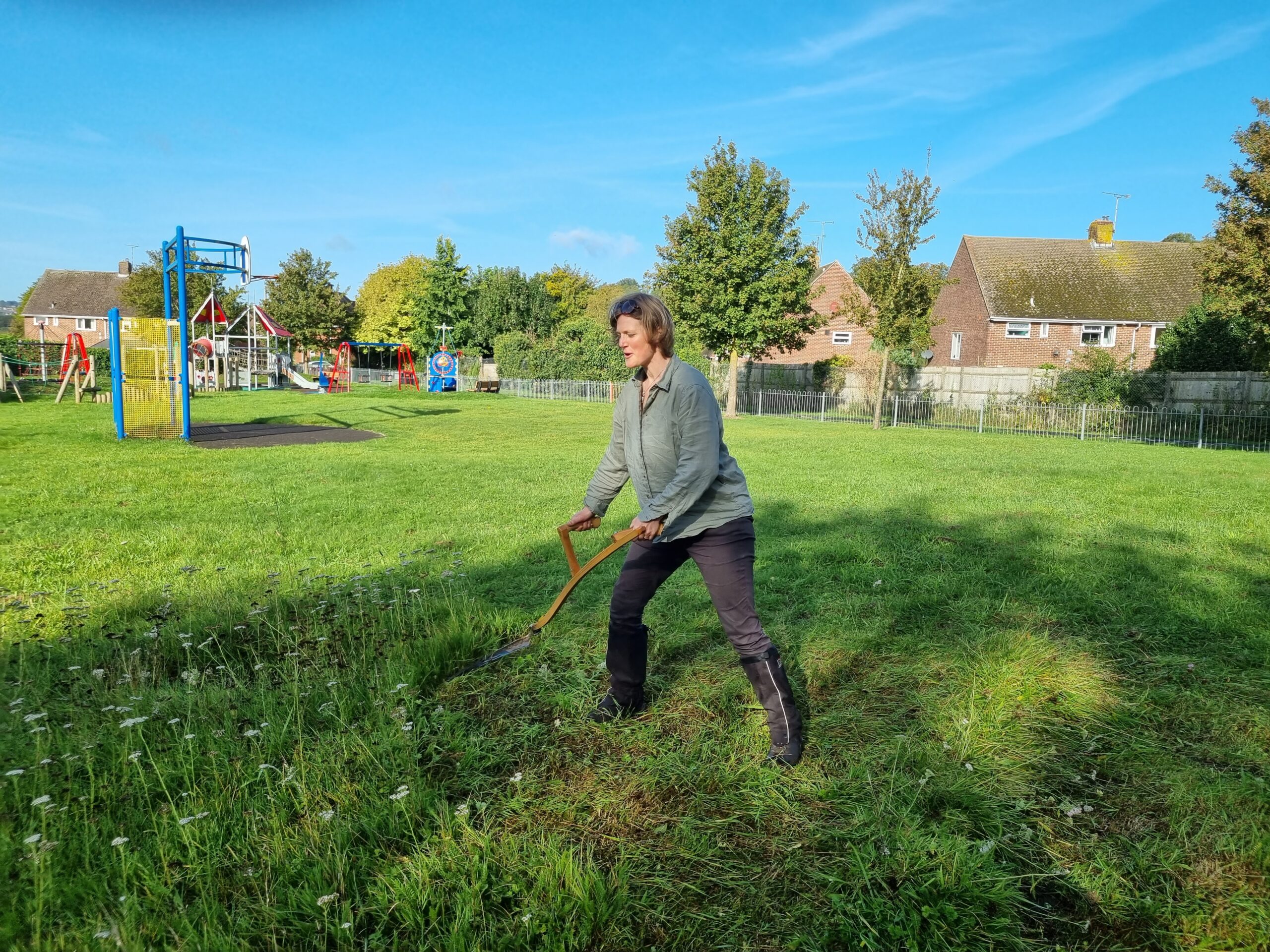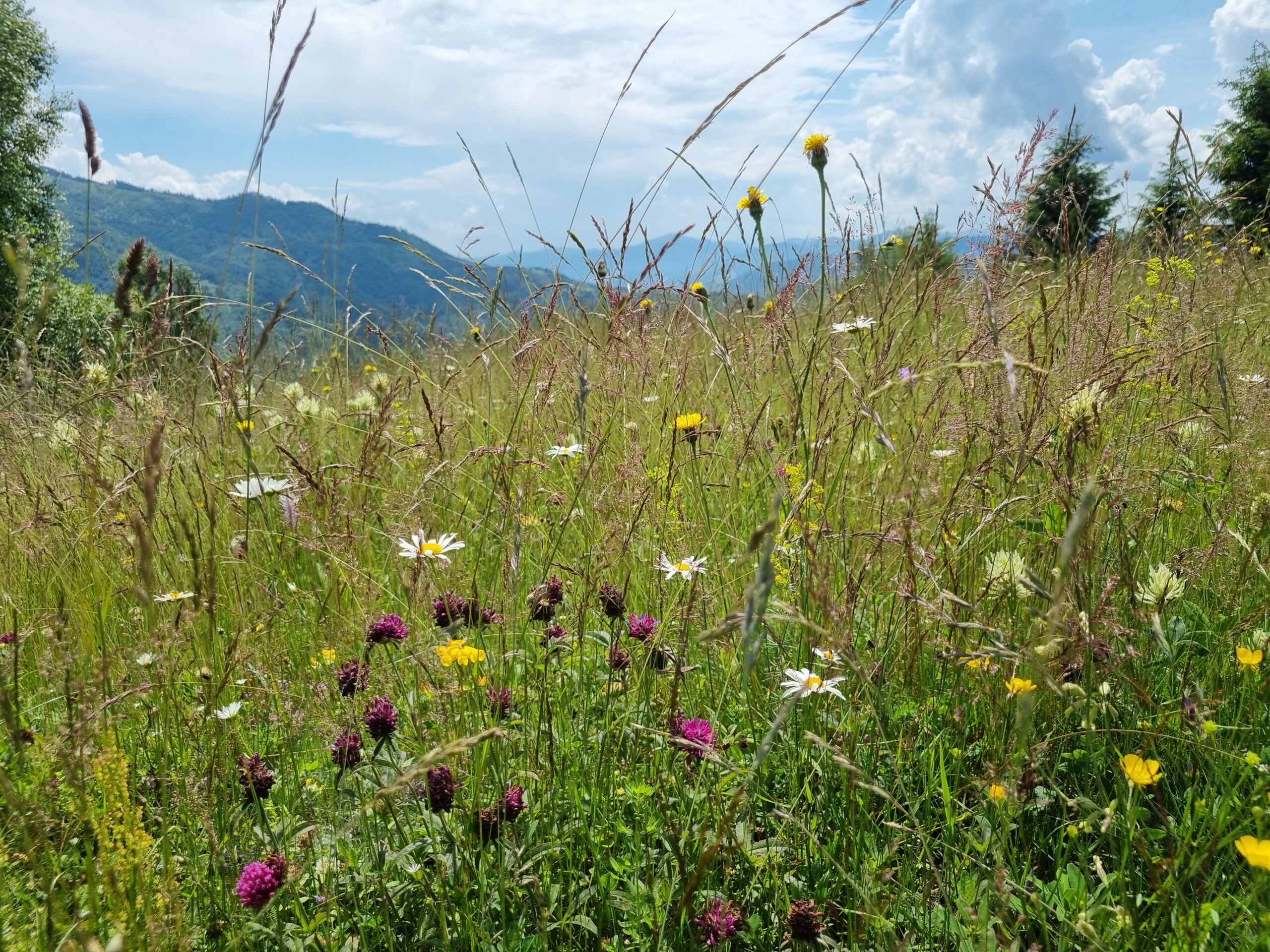Meadows with Rachel
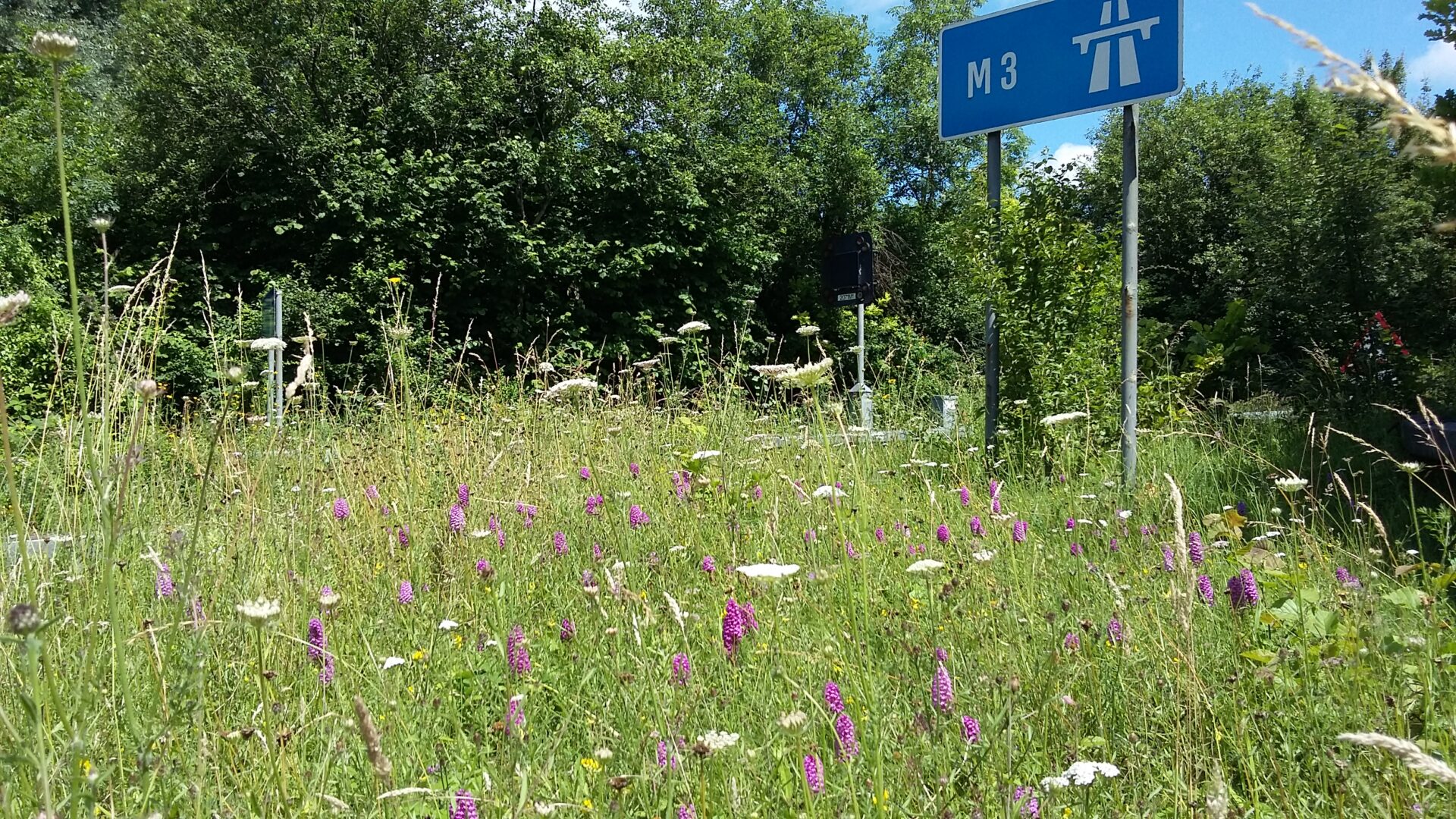
CPRE Hampshire is pleased to collaborate with Rachel Remnant, a Winchester-based ecologist, specialising in meadow management.
Through our work with Rachel, we aim to connect residents living on the urban edge of Winchester with the local chalk grasslands that lie right on their doorstep. By fostering this connection and promoting awareness of the importance of these natural habitats, we can work towards preserving and enhancing the beauty of our local landscapes.
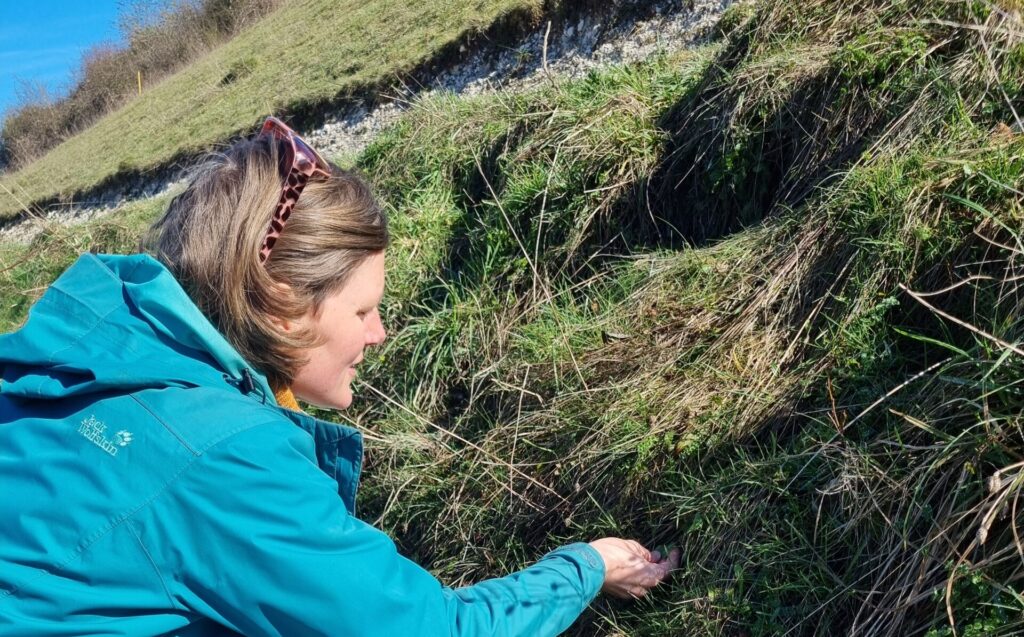
In 2016, ecologist Rachel Remnant, was awarded a Churchill Fellowship to research making hay by hand in Transylvania, Romania. Using her experience, she now promotes scything to manage small wildflower meadows in Winchester and beyond. In the article below, Rachel shares her passion for traditionally managed meadows, her experience of travelling through Eastern Europe and her commitment to tackle the climate and nature emergencies.
At one with the land
written by Rachel Remnant
Standing in the grey of a late winter afternoon, I peel open a bale of hay. The scent of summer lifts from the whispering stems. Sweet and earthy, the smell of coumarin brings back memories of long hot days in the meadow. I can see the dried meadow plants. The long tongues of ribwort plantain, a natural wormer which livestock seek out in the hay. Dried yellow flowers of bird’s foot trefoil. Red clover, more a magenta pink, known as the bread of the bumblebee for the rich nectar and pollen it provides. The muted colours remind me of the cycle of the seasons. Summer hay in my hands, wet, muddy winter under my boots.
I’ve long had a love of the natural world; woven through my childhood and teens and now into adulthood, with 22 years spent working in conservation. Recently I was stunned to remember something I believed as a girl; by the time I was 40 (a milestone now passed) surely the big nature problems of the world would be solved. Our seas no longer exploited, the destruction of rainforest habitats halted. What have we missed, what hasn’t worked? Now I wonder if it could be the way we relate to nature?
Robin Wall-Kimmerer writes in her book, Braiding Sweetgrass, “Restoring land without restoring relationship is an empty exercise. It is relationship that will endure and relationship that will sustain the restored land”. This might sound like something distant from our day to day lives, but the food we eat, the air we breathe, the water we drink, all these essential ingredients of life are dependent on a healthy planet. Add to that the places we treasure visiting, the wildlife we are wowed by – the natural world is important to us.
I recently set up Land Lore Consulting to help people take action on the climate and nature emergencies. Habitats matter; looked after appropriately they support a wealth of wildlife and have extraordinary functionality, such as filtering water and storing carbon. Also, they have direct value to us, such as supporting grazing livestock reared for dairy, meat and textiles. I have a particular interest in floodplain meadows having both managed them day to day and undertaken research of them as a Hampshire Ambassador for the Floodplain Meadows Partnership.
My secret weapon may sound too small to make a difference, but the Austrian scythe has brought a scything renaissance to the UK. It is practical for managing small grassland areas and puts the user at one with nature, with no fumes or noise. In 2016 I secured a Churchill Fellowship to travel to Transylvania, Romania, to research community connection to meadows via haymaking. It was incredible to experience the intact ecosystems, shepherding and high food self-sufficiency. It showed me what is possible when communities are part of their local habitat. I returned with enthusiasm to pass this expertise on locally. When I train people, they often comment on how they feel they are touching the meadow, they are forging a multi-sensory understanding of the field we work in.
Last year I returned to Transylvania, travelling solo, overland by train from Winchester. They had a late spring there, and the meadows and alpine pastures were stunning, wild with blooms and bird song. The nutritional and medicinal values of the hundreds of plants is known by the small-scale farmers and this means that the meadows and wood pastures are bursting with flowers, insects and birds. I was told to sing or whistle as I checked the dairy cows’ electric fences to avoid encountering brown bears. Fortunately I only ever saw a footprint!
Managing land is both a science and an artform, requiring understanding, patience, humility and perseverance. Managing meadows can start with soil sampling, followed by wildlife surveys, to help decide the best time for haymaking that will maximise the nutritional value of the crop and protect the species that live in the meadow. Meadows are a semi-natural habitat co-evolved with haymaking which helps keep fertility levels down, supporting a more diverse range of flora which would otherwise be out-competed by more vigorous grasses.
Hampshire is blessed with a rich tapestry of habitats. Rolling chalk downland, intricate water meadows, deep woods, rippling chalk streams, heath, shoreline and seascapes. Protecting them starts with deepening our relationship with them. From simply expressing gratitude for our favourite place to taking part in active land management, we can all grow our understanding and help restore natural processes to the places that matter to us.
Article and photos shared with kind permission by Rachel Remnant.



